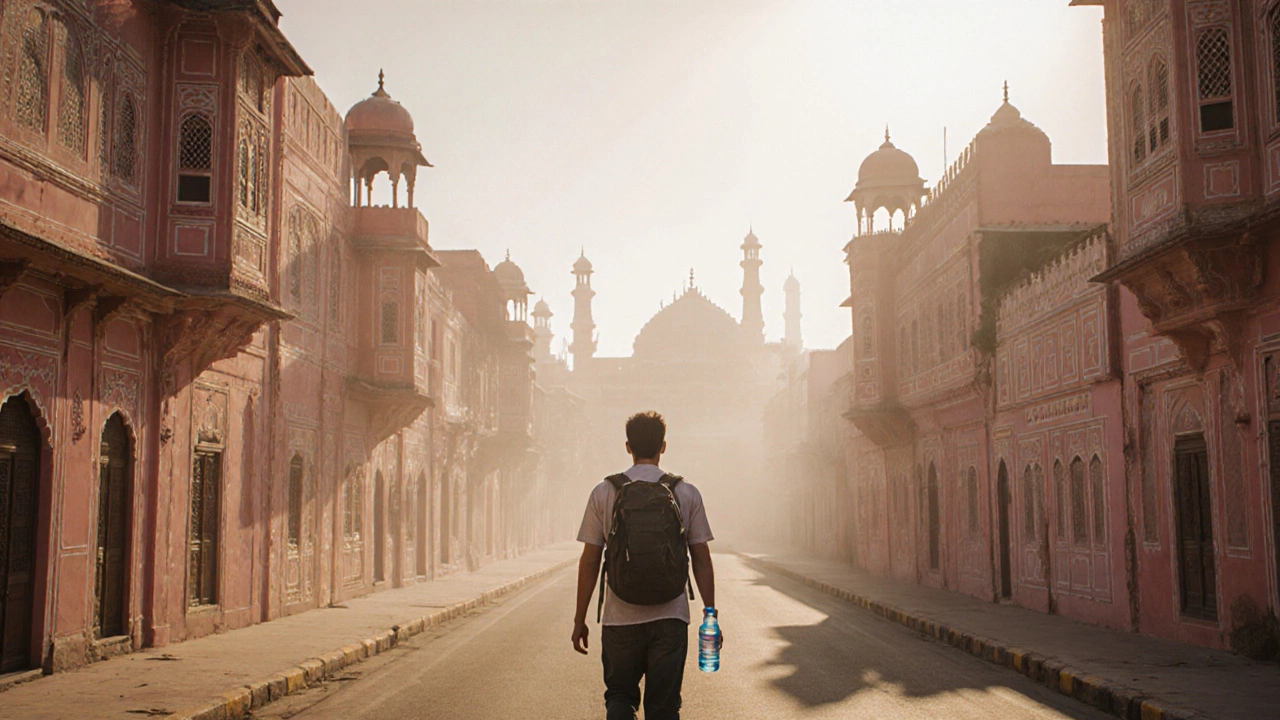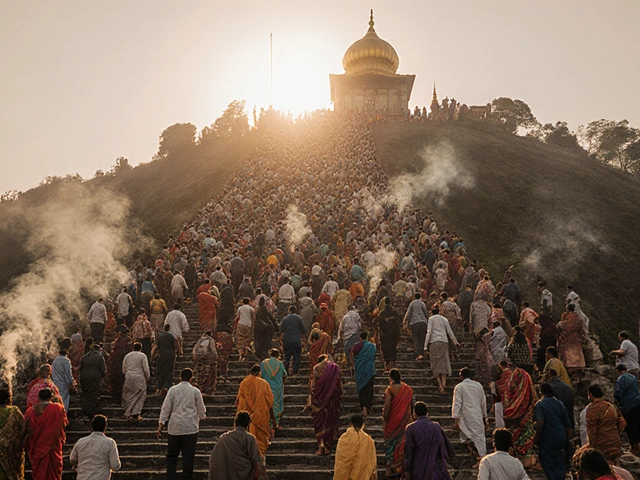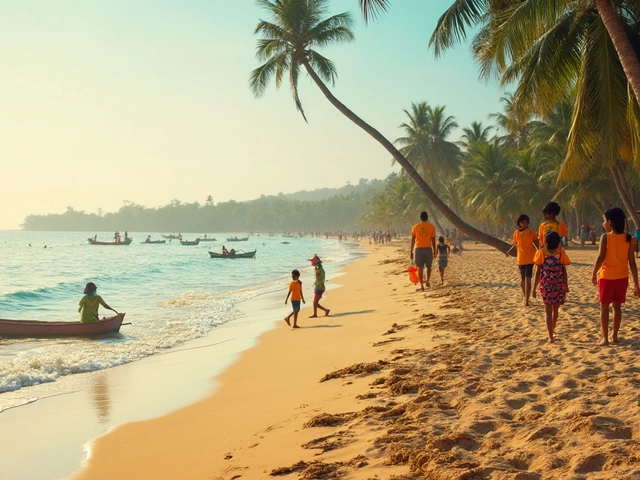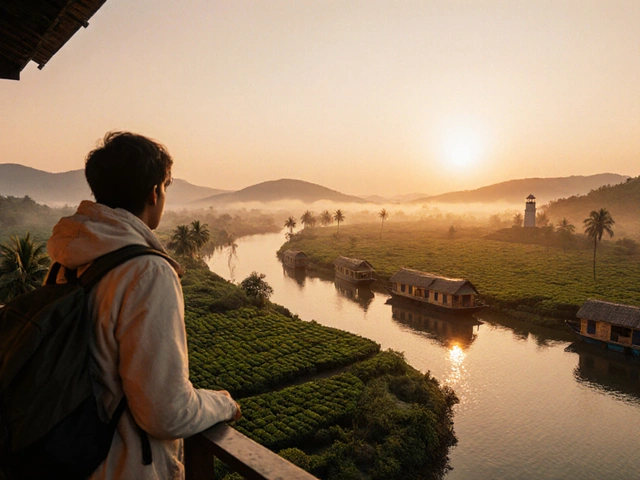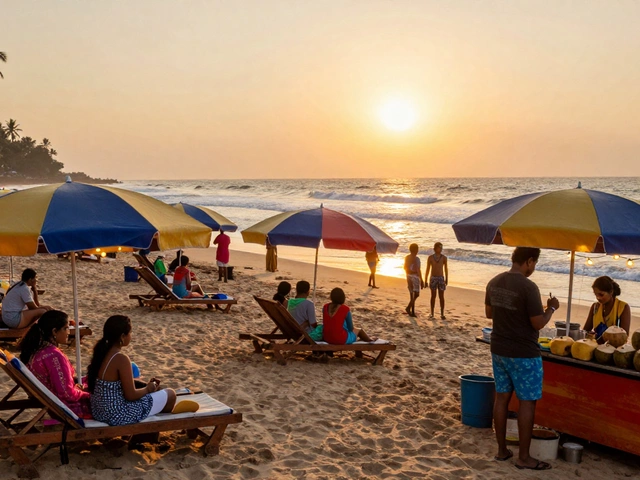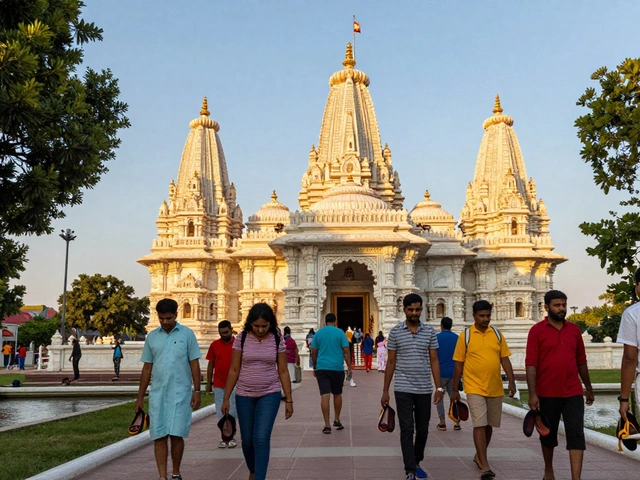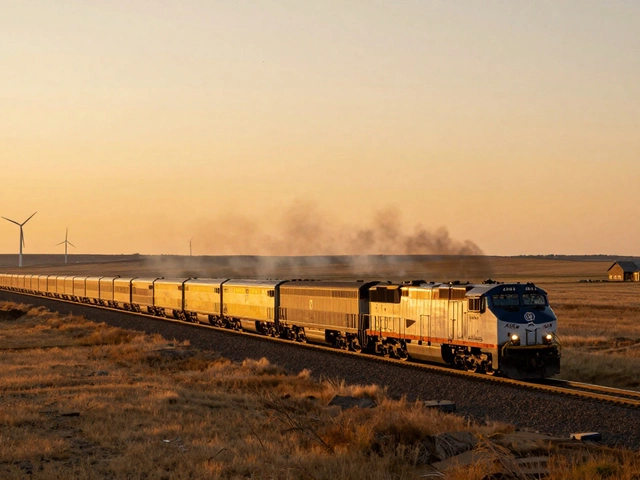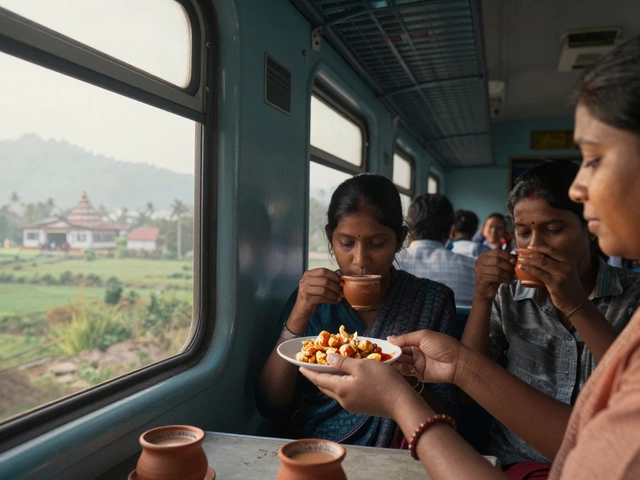India Travel Timing Calculator
Find Your Perfect Travel Month
Enter your planned travel dates to see when India is ideal for budget travelers
Your Recommended Travel Window
Weather
N/A
Crowd Level
N/A
If you’re planning a trip to India on a budget, timing matters more than you think. It’s not just about finding cheap flights or hostels-it’s about picking the right month when everything lines up: good weather, lower prices, fewer crowds, and still plenty of magic. Millions of foreigners visit India every year, but not all months are created equal. Some months turn a dream trip into a nightmare. Others make it feel like you’ve got the whole country to yourself.
October to March is the sweet spot
October through March is when the majority of foreign tourists show up in India. Why? Because the weather is actually pleasant. After the monsoon rains fade in September, the air clears, the humidity drops, and the sun becomes warm but not punishing. In North India, Delhi and Agra see daytime highs around 25°C in October, falling to a comfortable 18°C by December. By January, nights get chilly-especially in Rajasthan-but the days are crisp and perfect for exploring forts and palaces.
South India stays warmer, but even there, the humidity drops significantly. In Kerala, the backwaters are calmer, and the beaches like Varkala and Kovalam get quieter. You can still find guesthouses for under $10 a night in these months, and local transport like trains and buses run on regular schedules without the chaos of peak season.
This six-month window is when foreign tourist numbers peak. According to India’s Ministry of Tourism, over 70% of international arrivals happen between October and March. The numbers don’t lie: November, December, and February are the busiest. That’s when families from Europe, Australia, and North America plan their winter escapes. But here’s the trick-you don’t have to go during the peak of the peak.
November and February: The Goldilocks months
November and February are the quietest of the busy season. Why? Because they avoid the two biggest tourist rushes: Christmas-New Year and Indian festivals like Holi.
In November, the monsoon is long gone. The air is dry, the skies are clear, and the temperature is just right for walking through Jaipur’s pink streets or hiking in the Himalayas near Manali. Prices for hotels and guided tours are still reasonable. You won’t find the same crowds as in December, but you’ll still get full access to everything. Many foreign backpackers choose November because it’s the last month before prices spike for the holidays.
February is even better if you want to avoid crowds. The winter chill is fading, but it hasn’t turned hot yet. In Rajasthan, you can still sleep under the stars in Jaisalmer without sweating through your sheets. In Varanasi, the ghats are peaceful in the early morning. And the famous Pushkar Camel Fair happens in November, but by February, the dust has settled, the vendors are gone, and you can still enjoy the town’s spiritual vibe without the noise.
Avoid these months if you’re on a budget
June to September is monsoon season. It’s not that no one visits-some adventurous travelers do-but it’s not ideal for budget travelers. Roads flood, trains delay, and many hill stations like Ooty or Munnar become inaccessible. Hotels slash prices, sure, but you’ll pay in other ways: canceled tours, soggy clothes, and mosquitos that feel like they’re on a mission.
December 20 to January 10 is the worst time for budget travelers. It’s the holiday rush. Flights from Europe and the US to Delhi and Mumbai double in price. Even basic guesthouses in Goa and Jaipur charge 2-3 times their normal rate. A hostel bed that costs $5 in October will cost $15 in mid-December. And good luck getting a train ticket-Indian Railways books out months in advance for this window.
March is a gray area. The weather starts warming up fast, especially in the north. By late March, Delhi hits 35°C. It’s still manageable, but the heat is creeping in. Prices begin to rise, and the crowds thin out. If you’re flexible, late March can be a good transition-fewer tourists, decent prices, and you’ll beat the scorching April heat.
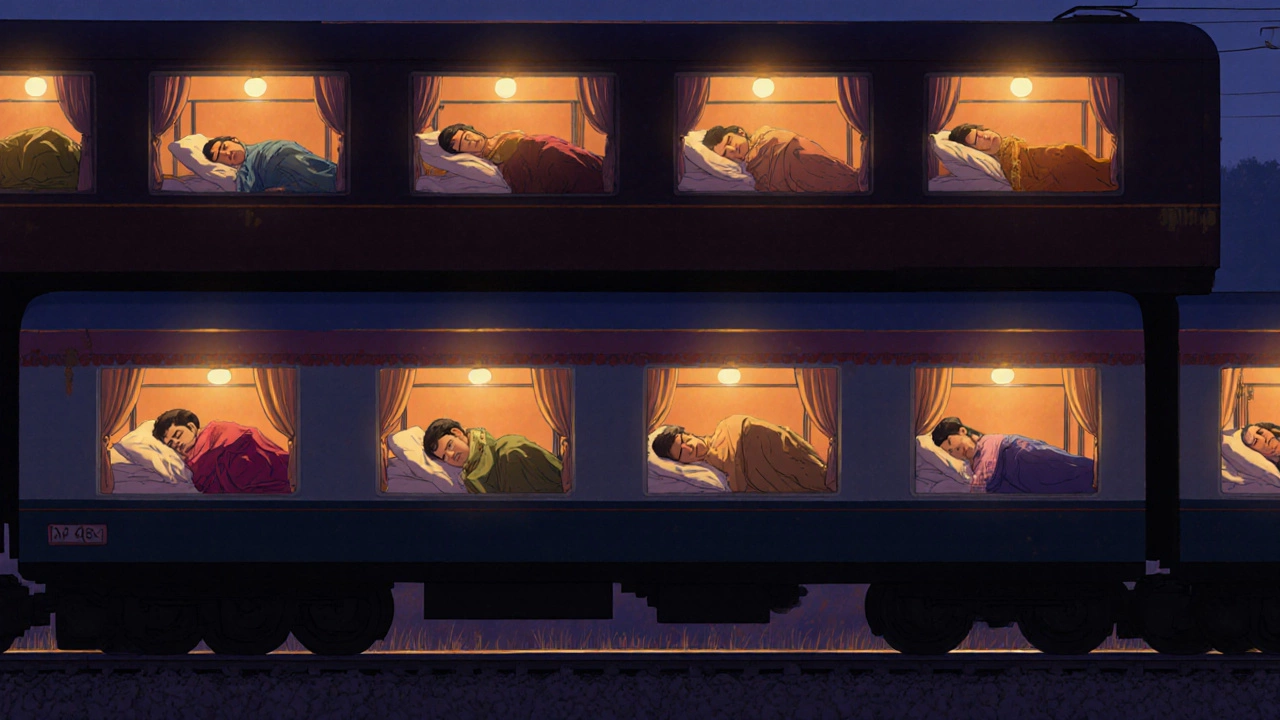
What foreigners actually do in these months
Most international visitors don’t just sit on beaches. They move around. A typical budget itinerary in November might look like this: arrive in Delhi, take a train to Agra to see the Taj Mahal at sunrise, then head to Jaipur for a night in a heritage hotel (many offer dorm beds under $12). From there, a bus to Udaipur, then a sleeper train to Goa for a week of beach time. All of this can be done for under $500 including flights from Southeast Asia.
Foreigners also love cultural festivals during this window. Diwali in October or November brings colorful lights and street food feasts across the country. Holi, in March, is wild and unforgettable-but it’s also expensive and crowded. If you want to experience Holi without paying triple, go to smaller towns like Barsana or Mathura instead of Delhi or Jaipur.
Many backpackers from Australia, Germany, and the UK plan their India trips around the Indian school calendar. Since Indian families travel during summer (June-August), the off-season for locals means more space and better service for foreigners in the cooler months. You’ll notice staff at guesthouses are more relaxed, guides are more available, and drivers are more willing to negotiate.
How to save even more
Even in the best months, you can stretch your budget. Book trains through the official IRCTC website-not third-party apps. They charge the same price, but you avoid hidden fees. Stay in government-run tourist lodges (Taj Mahal Hotel in Agra is a good example-they offer clean rooms for under $15). Eat where locals eat: roadside dhabas serve delicious dal tadka and roti for under $1. Avoid tourist traps in Old Delhi’s Chandni Chowk-go to the back alleys instead.
Use local buses instead of taxis. In Rajasthan, state-run buses cost $2 for a 6-hour ride between cities. A private taxi might cost $40. And always carry small bills. Many small vendors don’t have change for $10 notes.
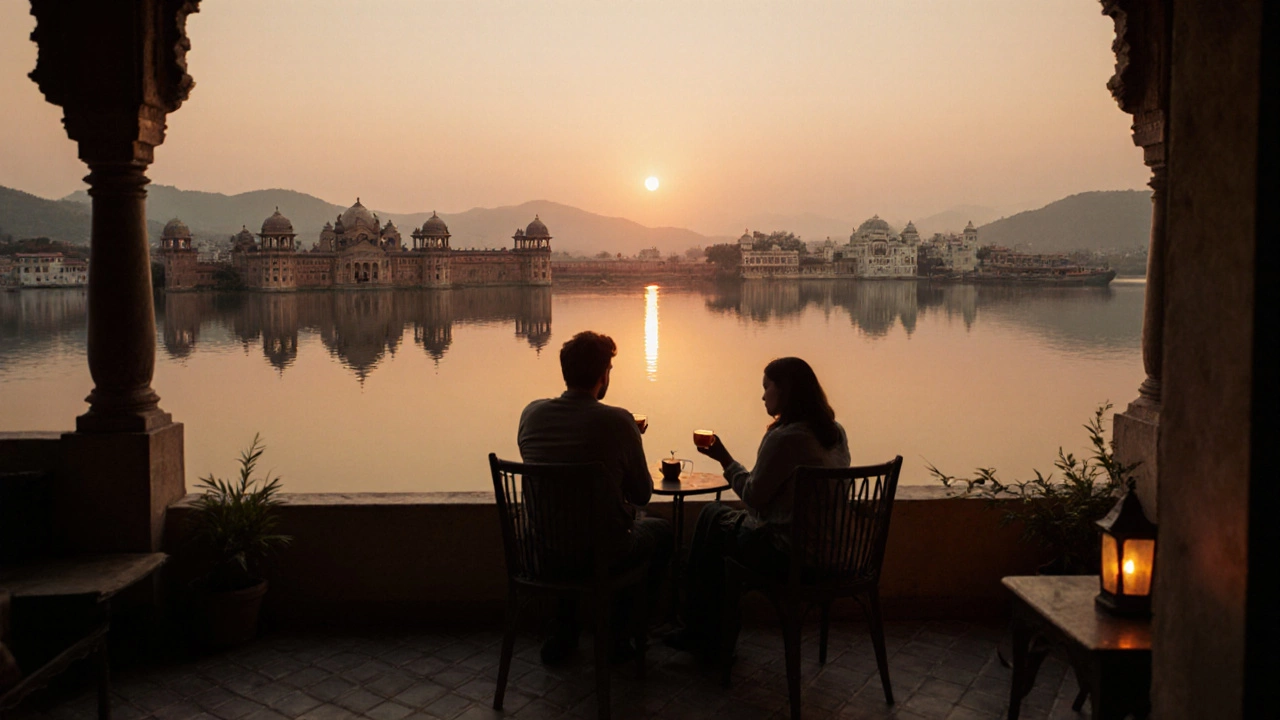
Real travelers, real experiences
A couple from Sweden told me they visited India in February 2024. They spent 28 days traveling from Varanasi to Rishikesh to Jodhpur to Udaipur. Their total budget? $850. They stayed in hostels, ate street food, and took overnight trains. They said the best part? Sitting on the roof of a guesthouse in Udaipur at sunset, watching the sun dip behind Lake Pichola, with no one else around. That’s the India most foreigners come for-not the packed Taj Mahal at noon, but the quiet moments in between.
Another traveler from Canada, a solo female backpacker, went in late October. She said the weather was perfect, the people were friendly, and she didn’t feel unsafe once. She hiked in the Western Ghats, took a cooking class in Kerala, and rode a camel in the Thar Desert-all for under $600.
What to pack for these months
For October-March, you don’t need much. Light layers work best. A light jacket for chilly mornings in North India. A raincoat for occasional drizzles in South India. Comfortable walking shoes. A scarf for temple visits (many require covered shoulders). A reusable water bottle with a filter-tap water isn’t safe, but filtered water is cheap and widely available.
Don’t bring heavy winter gear unless you’re heading to Ladakh or Spiti Valley. Even in December, most of India doesn’t need coats. A fleece and a hat are enough.
Final tip: Book early, but not too early
If you’re going in November or February, book your flights 2-3 months ahead. Prices rise sharply 6 weeks before departure. But don’t book hotels more than 2 months in advance unless you’re going to a festival. Many places offer better deals if you show up and ask-especially in smaller towns. A little flexibility goes a long way.
India doesn’t reward the rushed. It rewards the patient. The right month turns a trip into a memory. Choose wisely, and you’ll leave with more than photos-you’ll leave with stories that stick.
What is the cheapest month to visit India as a foreigner?
October and late March are the cheapest months for foreign travelers. October comes right after the monsoon, so prices are low and crowds are thin. Late March is before the peak summer heat and the holiday rush. You’ll find better deals on flights, hostels, and local transport during these windows.
Is December a good time to visit India on a budget?
December is not ideal for budget travelers. It’s the peak of the tourist season, especially between Christmas and New Year. Flights and accommodations double or triple in price. Train tickets sell out months in advance. If you must go in December, avoid Delhi, Agra, Goa, and Jaipur. Head to lesser-known places like Orissa, Chhattisgarh, or the northeastern states for better deals.
Do foreign tourists visit India during monsoon season?
Yes, but not many on a budget. Monsoon season (June-September) brings heavy rains, flooded roads, and canceled tours. Some adventure travelers go for the lush green landscapes or to experience Kerala’s backwaters at their fullest. But for most foreigners, the inconvenience outweighs the low prices. Budget travelers usually avoid this time unless they’re specifically chasing rainforest hikes or yoga retreats in quiet towns.
Which cities attract the most foreign tourists in India?
Delhi, Agra, Jaipur, Varanasi, and Goa are the top destinations for foreign tourists. Delhi and Agra are must-sees for history lovers. Jaipur draws those interested in royal culture. Varanasi attracts spiritual seekers. Goa is the beach hub. Outside these, cities like Udaipur, Mysore, and Kochi are growing in popularity for their quieter vibes and lower costs.
Can I travel across India by train on a budget?
Absolutely. Indian Railways is one of the cheapest and most efficient ways to travel long distances. A 12-hour sleeper train ride from Delhi to Jaipur costs under $10. Book early through IRCTC’s official site. Avoid AC coaches unless necessary-ordinary sleeper class is clean, safe, and way cheaper. Many foreigners use trains as their main transport-they’re part of the experience.
